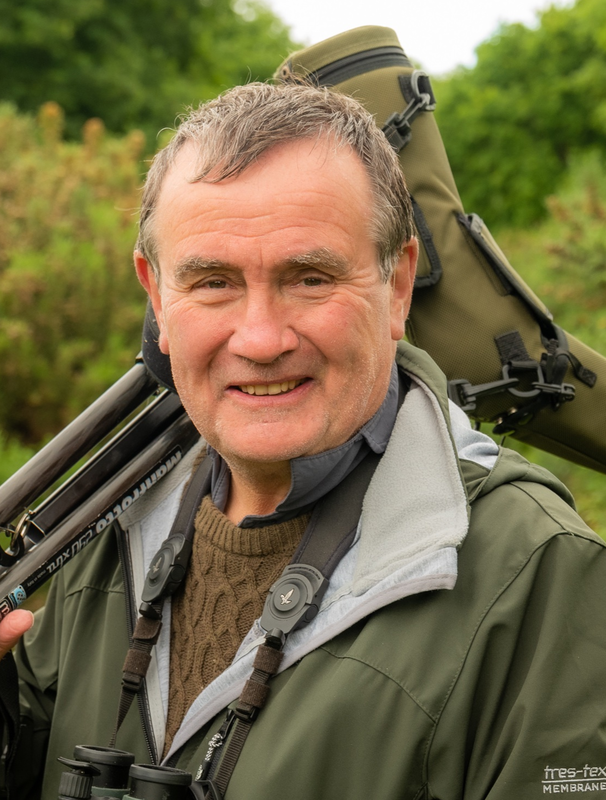 Map (left) showing location of road to TV masts and (right) route to the masts (c12 km)
Map (left) showing location of road to TV masts and (right) route to the masts (c12 km) This spring (2014) I was determined to find the right route at the very least and, hopefully, see how far along the track I could drive without worrying Liz unduly. First problem – finding the route – wasn't so hard as I feared largely since I'd remembered to have a good look at Google Maps before | left home. You just drive off the main road into Jimena, go straight across two roundabouts and then take the next left. There's a clue in the name of the street, Calle Pasada de Alcala which, it turns out, is the far end of the drove road that runs east from Alcala. If in doubt just follow signs to the local Guardia Civil office. So having got to Jimena and on the right road, that was two problems dealt with!
At the bottom of the valley a narrow, straight bridge runs above the Rio Horzgarganta – being somewhat grander than such a track would normally enjoy, I assume it was part of Franco's proposed new road. It's worth pulling off here and watching for birds – the river has Grey Wagtails and Little Egrets, turtles bask on the rocks and I've seen snakes here. Two paths run along the river into the woods and a circular route up to the caste above the town is possible (see map).
With the first two “problems” - getting to Jimena and finding the road – resolved, it remained to be seen whether the Spanish authorities had done anything to resolve the third difficulty, the state of the road. When I was last here just along the slope above the bridge the tarmac quickly degenerated into a dangerously pitted surface that threatened to “de-sump” the car of any incautious driver. This time all was gleaming new tarmac, but how far did it extend?
Weaving my way up the narrow tarmac thread, at each turning I fully expected to see the sinuous, metalled road to give way to a rutted track long before I reached the TV masts (Lomas de Camara). It never happened. The whole route of c12 km, bar the last 200m, is now well tarmacked (and the first 2 km of the route can be seen on Google Street View if you want to check). As it climbs, the road passes through a wide range of habitats – orange groves and small plots near the river, then rough pasture, bushy scrublands, pine woodland, cistus maquis (matorral) and a few isolated areas of bare rock. To be honest, birdwise there's probably not much to see here that can't be seen elsewhere – Bonelli's Warbler, Rock Bunting, Crested Tit, Firecrest, etc. There's always the chance of White-rumped Swift (although Jimena castle below is possibly better) amongst the swifts hawking along the ridge and, if you get it right, a stream of migrating raptors. That said, having found Alpine Accentor in similar habitat and where they're not supposed to be on the top of Picacho (only 16km to the NE), I wonder if they might haunt the rockier areas here in winter – I doubt whether many people have looked. Even if there are few birds, it does give you a great chance to see a cross-section of the attitudinal changes in vegetation. There are a number of tracks and paths off this route that I've yet to explore - one that's worth noting is the good gravel track that peels off to the left c250m after you cross the bridge. This meanders through attractive countryside, crosses the railwayline and then, via a ford, rejoins the A 405 (A 369) at the 24km marker just beyond Los Angeles (see Google Street View). It would make a pleasant diversion en route to or from Marchenilla (the site I'd detoured to on my first visit for Rufous Bushchat).
So is the 12 km detour up to the TV masts worth it? Very much so, for whatever the track may lack in exciting birds, is more than made up for by the stupendous views. To the north-west Grazalema lies stretched out into the distance, to the south Gibraltar stands along the coast, to the west the wooded hills of the Alcornocales and beyond them Cadiz and Jerez. So impressive are the views that you might expect the road to be clogged by tourists, but, unsignposted and little known, we found we had the place to ourselves. If you're out in Spain with non-birdy friends or relatives and it's a good clear day then taking them here is a must - they'll be impressed by your 'local' knowledge!

 RSS Feed
RSS Feed
